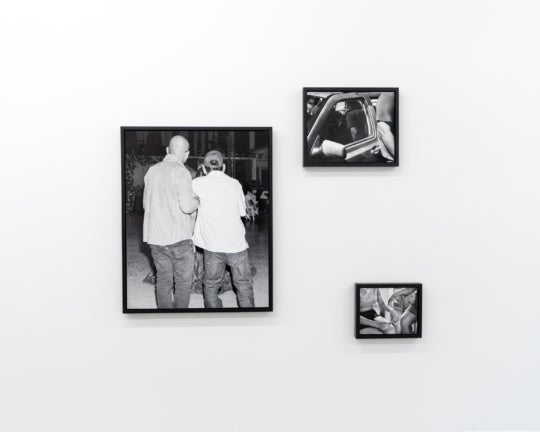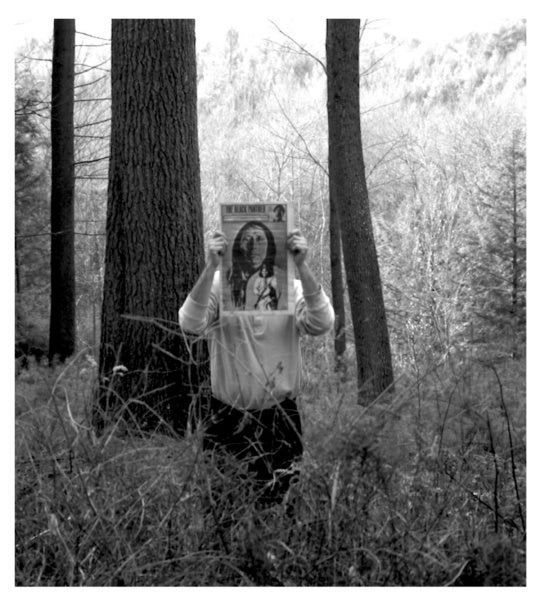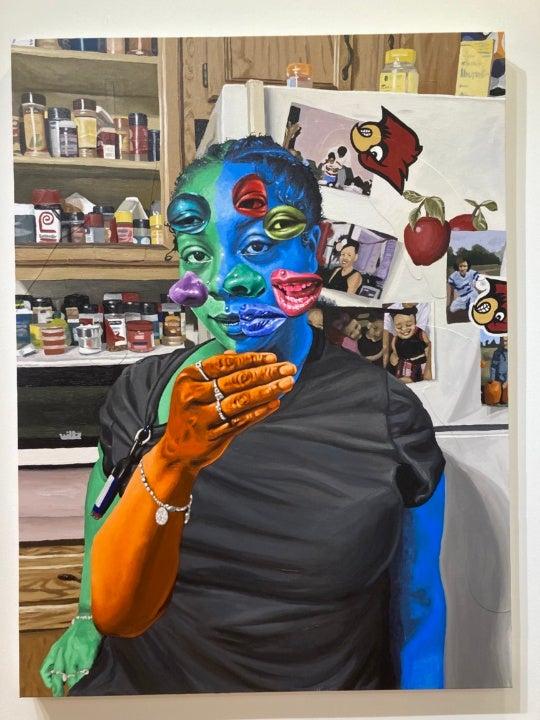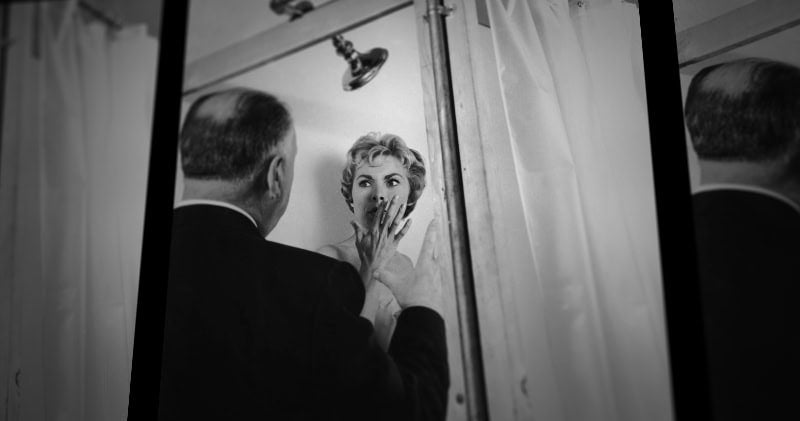
The simple act of showering post-Psycho has become an unsettling, forever changed touchstone, as cinematically altered as the wooden sled post-Citizen Kane or the wood chipper post-Fargo. Almost six decades later, Alfred Hitchcock’s 1960 thriller remains not just masterful entertainment, but an illustration of film’s power as an art form capable of imprinting culture on a deep and profound level.
Named for the number of camera setups (78) and the number of cuts (52) in Psycho’s iconic three-minute scene, Swedish filmmaker Alexandre O. Philippe’s 78/52: Hitchcock’s Shower Scene is a cineaste’s dream. The documentary, which will play at SCADshow on January 23 and 24, is a deep dive into not just Psycho’s significance as a transgressive, genre-upending moment in horror and gateway to the modern slasher film but its function as a masterful piece of film art where editing, sound, music, direction and the power of suggestion came together into one skin-crawling, eye-covering indelible film moment. As producer/writer Daniel Noah attests in one of the many industry interviews in the doc, even his seven-year-old daughter recognizes composer Bernard Herrmann’s unforgettable knife-slashing staccato soundtrack without ever having seen the film itself. It’s as if, he muses, we are all born with that score reverberating in our brains, like a cinematic birthmark on our cerebral cortex. “It’s evolutionary,” laughs Noah.
Playing with our allegiances and sympathies, Psycho’s plot famously centers on grubby layers of sin, guilt and regret—embodied by its heroine Marion Crane (Janet Leigh)—that play into Hitchcock’s own imprinted Catholicism, notes director Guillermo del Toro, who is also interviewed in the film. Already compromised by an adulterous relationship and fleeing Phoenix with stolen money, Crane’s stop in a downpour at the remote Bates Motel proves a disastrous end game with a lonely, mother-dominated young man Norman Bates (Anthony Perkins) who is dealing with his own dark, sexual impulses. A modern psychopath, Bates was himself a sea change in horror movie monsters, supplanting the giant bugs, space aliens and gothic ghouls that had previously animated the horror genre. In Psycho, the monster wore a human face and his wrath came out of nowhere. Breaking a sacred movie pact with his audience, Hitchcock also killed off his leading lady within the first 40 minutes of his film in an unprecedented attack upon narrative expectations.
Weaving in and out of generational vantage points, 78/52 interviews modern horror directors like Eli Roth (Hostel) and del Toro (The Shape of Water), slasher-author Bret Easton Ellis (American Psycho) and actor Elijah Wood, still grooving on the reverberations of Hitchcock’s art. Also weighing in are academics and an older generation of direct witnesses who experienced this cataclysmic horror first hand. They include Marli Renfro, a kewpie-faced former pinup model and Janet Leigh’s body double in the famous shower scene who provided the suggestive soft white flesh that Norman Bates would eventually sink his knife into, and director Peter Bogdanovich (The Last Picture Show), a film critic at the time, who recalls entering harsh daylight after a press screening of Psycho, describing in hysterical fashion of the film’s effects — metaphorically clutching his ascot — “I felt I’d been raped.”
Though for some viewers 78/52 might feature a few too many such hyperbolic descriptions of the exquisite carnage of Marion Crane’s violent death (a number of those interviewed are, after all, horror directors for whom fetishized murder is their bread and butter), Philippe cuts through the fanboydom with the necessary addition of female voices, including director Karyn Kusama (Girlfight), actresses Illeanna Douglas and Leigh’s daughter Jamie Lee Curtis, to temper some of that breathless adoration and talk of film-going as rape. Or, as Kusama rightly pegs Psycho, it was “the first modern expression of the female body under assault.” The compelling takeaway at the center of Philippe’s film is how Psycho opened the door to graphic violence, especially acted out upon women, transmogrified into entertainment.
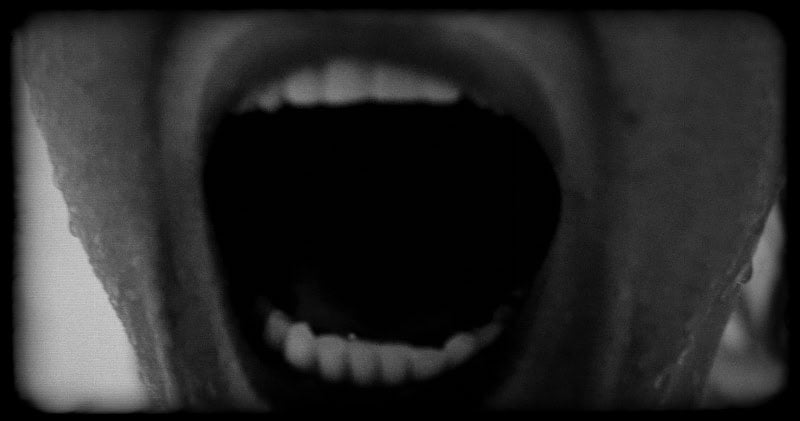
In a continuum from art history to popular cinema, Denver Art Museum curator Timothy Standring inadvertently provides a historical through line for that progression in violence-meets-eros in 78/52. Standring describes the moment in Psycho when Norman Bates removes a painting from a wall in the Bates Motel’s parlor to reveal a peephole into Marion Crane’s room. That painting, a copy of Willem van Mieris’s 18th-century Susanna and the Elders, of two fully clothed elderly men groping a naked young woman, is one of many moments in a film that also reveals uniquely gendered impressions of violence and imagery. It depicts “almost a rape scene,” says Standring of the image that Hitchcock uses as an echo of Bates’ voyeurism and a foreshadowing of the attack to come.
Psycho was, as several of Philippe’s talking heads attest, Hitchcock’s thumbed-nose, lowbrow, assaultive answer to the sleek, glamorous, highbrow thrills of his previous film North by Northwest. Hitchcock shot Psycho in black and white for a reason, he says in the documentary. “If it had been in color, the draining away of the blood” in that climactic shower murder scene, he shudders, “would have been too repulsive.” That choice also echoes the pulp novel grubbiness of adultery, and embezzlement, cross-dressing, voyeurism and murder that make the film feel as uniquely kinky and brilliant today, even within a horror genre that has catapulted in leaps and bounds over the wall of good taste and the taboo again and again.
Proper homage is paid in 78/52 to the cultural shift that Psycho signaled, fast on the heels of the devastating 1959 murder of the Clutter family in Holcombe, Kansas, immortalized in Truman Capote’s In Cold Blood, and in anticipation of the violence and national reckoning of the Civil Rights and Vietnam War protests to come. But Philippe’s film also acknowledges the cinematic inroads crafted by the dream team setup of Hitch, composer Herrmann, graphic artist Saul Bass, who created a shot-by-shot storyboard of Psycho’s shower scene, and editor George Tomasini, whose ministrations yielded disorienting shifts in perspective, alongside an auditory assault as distinctive as its visual one. Fans will love anecdotes of how Hitch achieved the graphic sound of a knife impacting flesh (hint: it’s not just for breakfast anymore) and the optical illusion that had viewers feeling as if they had watched Janet Leigh violently penetrated with a kitchen knife.
One of the film’s most thrilling segments is a shot-by-shot breakdown of that famous scene, a mini graduate film seminar on filmic effect. No moment is wasted, no meaning-making opportunity overlooked in Hitchcock’s economical, tightly strung style, a brilliant mousetrap that has been ensnaring filmgoers for generations.
“78/52” screens Tuesday, January 23 at 6:30pm at SCADshow (173 14th St. NE, Atlanta). On Wednesday, January 24, director Alexandre O. Philippe will appear in a Q&A following a 6:30 screening of 78/52 at SCADshow. For tickets go to Eventbrite.

